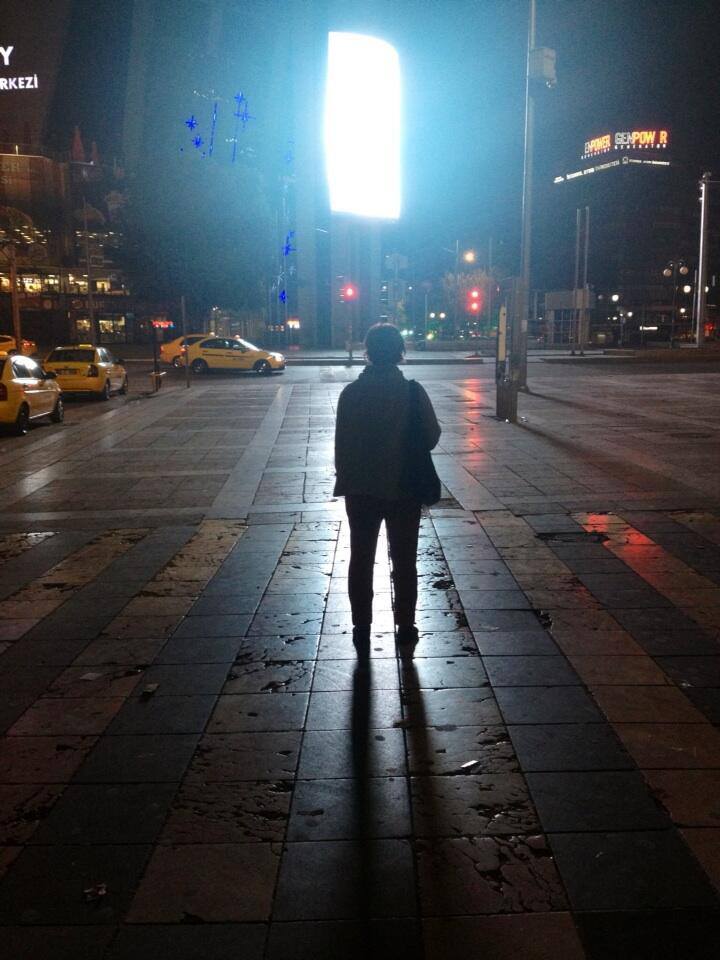
In this season of mass protests and demonstrations, much of the news media has decided that this global phenomenon is an expression of `middle-class rage’. It’s not. The waves of mass protests are a creative response to the form of urbanization that now covers the globe. Remember, already more than half the world population lives in urban zones, and, according to the United Nations, soon more than half the world population will live in urban slums. This means the urban local is global. That’s the lesson that protesters, and in particular women protesters, are once again bringing to the streets and beyond.
The march of protests is a global urban uprising. Ask the women, and their colleagues and friends, who, through policy brutality, have become icons of the protest movements.
When Ceyda Sungur, Gezi Park’s `woman in the red dress’, was interviewed, after the police pepper sprayed her in the face, she deflected personal attention: “A lot of people no different from me were out protecting the park, defending their rights, defending democracy. They also got gassed.”
How does protecting a park equal defending rights equal defending democracy? On one hand, in the specifics of the moment, the equation is part of the pro-democracy rhetoric. On the other, more pertinent hand, Ceyda Sungur is an urban planner. When Sungur says, “For me this is about freedom of speech and the power of the people”, she means the struggle for the park, rights, democracy, freedom, power, is an urban struggle, a struggle against authoritarian, anti-human, anti-woman urban development.
Then there’s Liv Nicolsky Lagerblad de Oliveira. She lives in Rio. One night, she was standing alone on a street corner where there had been demonstrations earlier. Hours earlier, the riot police had forcefully removed all the protesters, but they were still hungry. They descended upon Oliveira, alone, late at night, just standing, and pepper sprayed her full in the face at close range. Yet again, the riot police created a new icon, yet again a woman.
And yet again the message, this time Oliveira’s, was urban: “The city is being gentrified. The poor can no longer afford to live in some favelas and the elite is taking their place. The cost of life is increasing and the increase in bus fare was just the last straw.”
Around the world, thanks to `urban development’, the working poor can’t afford to live in the slums. Women know this story, because they’re the central, disallowed subjects.
Repeatedly, protestors argue the City has become the epicenter of debt-and-death. Worldwide women are protesting the designed hostility of `the new Jerusalem’ to women and girls. Women, like Ellen Woodsworth, the founder of Women Transforming Cities, are organizing with women to address the complete and systemic lack of gender equity lens that marks city planning and governance. Urban public lighting, transportation, access to medical care, access to police, affordable housing, green common spaces, toilets, living wages, decent working conditions, violence, crime, peace, well being, inequality, equality are all particular to women and are all feminist issues. For example, in Japan, the environmental recycling movement had to rethink everything when women challenged the assumptions of their mandated unpaid, unrecognized, `informal’ labor … in the name of a green economy. The women in Japan said, “No gender equity, no peace.” The women in Istanbul, Ankara, Dhaka, Rio, São Paolo, Vancouver, Cape Town, Barcelona, Buenos Aires, and beyond, are saying so as well.
The last green space in Istanbul is an urban women’s issue, and a feminist crisis. The rise in public transport fares and the pricing of slums out of the reach of the working poor in Rio de Janeiro is an urban women’s issue, and a feminist crisis. Thais Gomes, Brazilian `shantytown dweller’, understands that. It’s not “middle class rage”. It’s urban.
Around the world, women are saying “Hell no!” to the “gift” of global hyper-urbanization and “Hell yes!” to cities that respect all living beings as valuable, to city administrators and planners who see value in the social, to those who value women as humans, neighbors, partners.
(Photo Credit: Bianet)
.jpg)